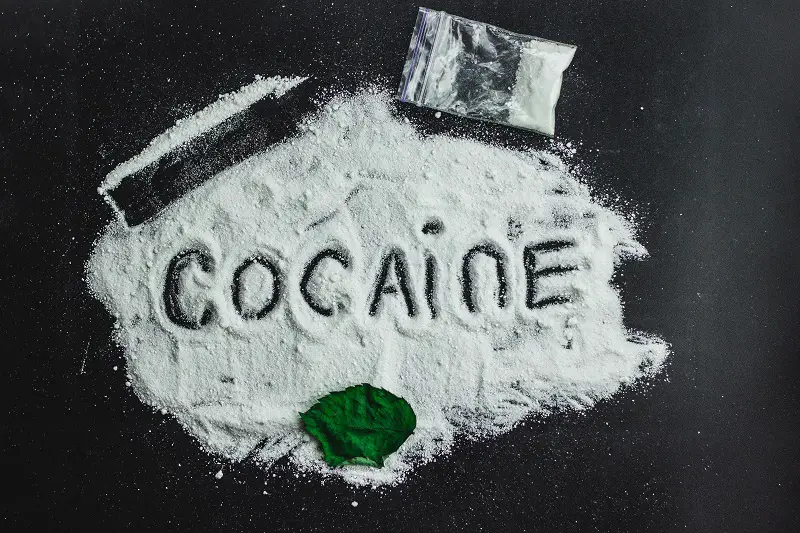How Long Does Cocaine Remain in Your System & Hair?
DISCLOSURE: As an Amazon Associate, I earn from qualifying purchases.
The length of time cocaine remains in a person’s body depends on the duration of use, how much is taken on average, and the kind of drug test.
Cocaine and its byproducts are available in several different ways, each of which has differing detection windows after the last use:
- Urine: 2-3 days, maybe up to 2 weeks in heavy users
- Blood: Up to 2 days
- Saliva: 1-2 days
- Hair follicles: 3 weeks, possibly longer
Urine tests are the most common method used to identify the presence of cocaine and its metabolites.
Hair follicle drug tests have the longest look-back period, and Saliva and blood tests have the shortest.
Also, read on to learn more about how long does weed stay in your hair.
What Is Cocaine?

Cocaine is a highly addictive stimulant collected from the leaves of the coca plant. Cocaine is classified by the DEA (Drug Enforcement Administration) as a Schedule II substance, indicating it is considered to have a high possibility for abuse and addiction and has limited medical applications.
Cocaine is often administered intravenously, intra-nasally (snorted), rubbed onto the gums or smoked in a rock-like form called crack.
Cocaine Elimination Times

Cocaine is rapidly absorbed after smoking, snorting, or injecting and is metabolized by enzymes in the bloodstream and the liver.
Benzoylecgonine is the major cocaine byproduct found in urine. Based upon the amount used and how frequently, benzoylecgonine can be found in urine for 2-3 hours following the last use.
The term “half-life” implies the amount of time it takes for half of the substance to be cleared from the body.
One study discovered the average half-lives for cocaine in body fluids to be as follows:
- Urine: 4.1 hours
- Saliva: 1.2 hour
- Plasma: 1.5 hours
The study also discovered that cocaine metabolites possess a half-life ranging from 14.6-52.4 hours, and even implied that the long-term use of cocaine causes a buildup in the body.
This can raise the amount of time that cocaine and its byproducts remain in a person’s system.
Factors That Affect Cocaine’s Detectability

Several factors influence the amount of time it takes for cocaine and its metabolites to be discharged from the body.
These include the following:
- Duration of use
- Organ function
- Individual genetic variables
- The usual method of management
- Average amount used
- Differences in metabolism
- Weight
- Type of test used
- Overall Wellness
- Presence of additional substances
As noted, urine testing is the most prevalent method to test for cocaine use. It has a broader detection window than either Saliva or blood and also grants fast results.
Hair testing can identify cocaine for the longest amount of time but is more costly, and many factors can cause hair testing results to be wrong.
Duration of Effects

Some people who abuse cocaine may worry about the drug being identified on a drug test for legal or employment purposes.
Others might be concerned about how long it will continue to affect them.
The desired effects of cocaine include euphoria, endurance, confidence, and increased energy.
Adverse side effects may include the following:
- Anger and irritability
- Paranoia
- Reduced appetite
- Nosebleeds, runny nose
- Headaches
- Convulsions and seizures
- Heart disease
- Difficulty swallowing
- Heart attack and stroke
- Sexual dysfunction
- Mood swings
- Lung harm if smoked
- HIV or hepatitis if injected
- Loss of sense of smell
The approximate amount of time a person will continue to feel the effects of cocaine varies by administration method:
- Taken orally = 90 minutes
- Inhalation (smoking) = 5-10 minutes
- Intravenously = 15-20 minutes
- Intranasal use (snorted) = 15-30 minutes

My name is Jay Wilson, but my friends call me JZ. Originally from Atlanta I now live in Denver, CO where things are ‘freer’ these days. Several years ago, I put this site up for a friend who asked me to find ways to beat his upcoming hair drug test. Fast-forward to today, I’ve answered more than 1,000 questions about the hair drug test and proven ways to beat it. I am an expert in the hair test – ask me anything!
